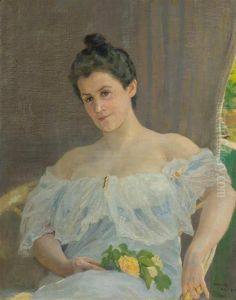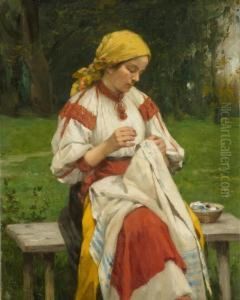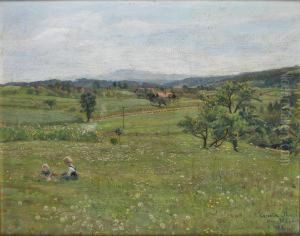Cornelia Paczka-Wagner Paintings
Cornelia Paczka-Wagner was a Polish painter known for her portrait and genre works. Born in 1864 in the Polish city of Lviv (then part of the Austro-Hungarian Empire and known as Lemberg), she was active during a period of significant change and development in the arts across Europe.
Paczka-Wagner received her initial artistic education at the local drawing school in Lviv. Her talent was evident early on, and she continued her studies at the prestigious Academy of Fine Arts in Munich, Germany, which was one of the few academies at the time that accepted female students. Munich was a hub for artists, and she would have been exposed to a variety of artistic styles and movements, including Realism and early forms of Expressionism.
Throughout her career, Cornelia Paczka-Wagner exhibited her work widely. She participated in numerous exhibitions in Munich and other European cities. Her portraits often depicted individuals from the upper echelons of society, showcasing her ability to capture both the likeness and the character of her subjects. Alongside her portraits, she painted genre scenes that reflected the customs and daily life of her time, providing a window into the social and cultural aspects of the late 19th and early 20th centuries.
Paczka-Wagner's style was characterized by a confident use of color and a keen eye for detail. Her work resonated with the artistic trends of her era, and she was recognized by her contemporaries as a skilled and accomplished artist. Despite the challenges faced by women artists during this period, she managed to carve out a successful career and gain recognition for her talent.
Cornelia Paczka-Wagner passed away in 1930. While she may not be as widely known today as some of her contemporaries, her contributions to the art world during her lifetime were significant, and her works remain a testament to her artistic skill and the rich cultural milieu in which she lived and worked.



